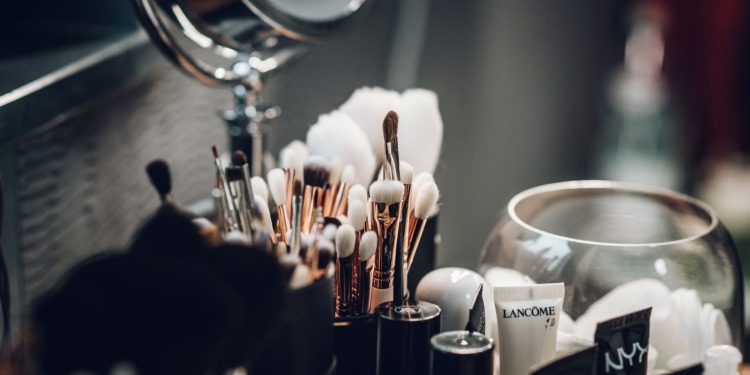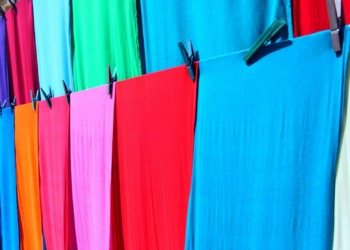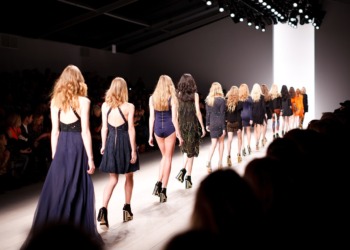“De-influencing’ is a current TikTok trend that has gone viral, with its predominant aim being to dissuade people from buying things.
It can be argued that one of the reasons this trend has hit such sky high popularity is because it goes against the grain of anything the influencing industry has ever done. It reduces sales as opposed to boosting them.
A social media influencer is someone who has a large following on social media, and is paid by companies and brands to post photos or videos of their products, containing a review, encouraging their followers to buy whatever it might be.
These products have gone out of fashion almost as soon as they have been purchased. Thus another wave of new unnecessary items are bought, used once, with a picture of them posted on all socials before being forgotten just in time for the next pretty little box in the post to repeat the process.
How does influencer marketing work?
Fashion and beauty brands regularly reach out to influencers and pay them to post recommendations for their products.
@darcymcqueenyyy some of my favorites recently!
all found on my storefront! @First Aid Beauty @Amazon #firstaidbeauty #ad
The industries that most commonly use influencers for their marketing are the lifestyle and beauty industry, contributing to 22.36% of all paid promotion on Instagram in 2021.
Notably, 84% of influencers worldwide are women.
Firstly let’s get to grips with what kind of impact influencers have on the sales and promotion of products globally.
A 2019 study conducted by Social Publi.com spoke to “150 consumer-facing digital marketing professionals (Advertising, Public Relations, Digital Media, and Branding).” and found that 93% of them use influencer based marketing strategies.
This was found to be a rising trend, as only a third of this group had been using influencers for their marketing for longer than three years.
Out of this 93%, most of them (89%) reported that influencer marketing was effective for their business.
Shopify conducted a study based on the consumers view of influencer based advertisement, and found that 61% of consumers trust recommendations from influencers, whereas only 38% trusted advertisements coming directly from the brands that make the product.
Viewers are able to build up a false sense of relationship with the influencers they follow.
It’s this idea of a connection to certain personalities that provides viewers with a desire to buy the same products as them, as a real person promoting a product feels like a far more trusted source than a brand itself.
How much waste is produced from all of this?
The main point of concern for all of this is the amount of wasted products that this fast paced marketing produces.
Here is an example of the vast amount of beauty products people have purchased due to TIkTok marketing.
@lauraxbui What products would you like me to rate next? #fyp #tiktokmademebuyit #makeup #beauty
A recent study shows that the most money spent quarterly on any app was TikTok with $840 million dollars in the first quarter of 2022, proving what a gigantic impact influencers are having on people’s spending habits.
Zero Waste is a European network aiming at “eliminating waste in our society”.
They have found that 120 billion units of packaging are produced by the cosmetics industry every year, a quantity that could easily be reduced if consumers only bought products that they use on a regular basis, and did not throw things away as soon as they have taken a photo of them for social media.
______________________________________________________________________________________________
Related Articles: How TikTok Lost Europe’s Trust | How TikTok Threatens Our Quality of Life | Slow Living: The TikTok Trend Promoting Personal and Environmental Wellbeing
______________________________________________________________________________________________
It has also been found that the average woman in Britain produces 527 cosmetic waste items a year.
Arnaud Plas, CEO of beauty brand Prose has told Vogue Business that he estimates between 20 and 40% of all beauty products result in the bin.
Where does de-influencing come into play?
De-influencing is a new trend, with the avowed aim to discourage people from buying things.
The movement is seen as an environmentally friendly approach to the influencer industry, and some of the people participating in it are doing a fantastic job at mocking those who promote over consumption.
TikTok “de-influencer” @hellohellohannah has an entire account dedicated to making people re-think their consumer habits, going against the grain of the average social media user.
@hellohellohannah #duet with @alliephunter #amazonfinds #deinfluencing
Here she is seen humorously mocking people for following consumer trends, attempting to discourage people from buying things they don’t need.
@hellohellohannah #duet with @uryo1113 #LifeHack #deinfluencing
Potential downfalls of “de-influencing”
Although the current de-influencing trend appears to be an environmentally friendly approach to consumerism, some might argue that it is in fact a loophole for even more waste.
Some TikTok influencers instead of mocking people buying things in the first place, simply post negative reviews of beauty products. This method is probably discouraging some people from buying things, but it doesn’t mean that the products are not being bought and wasted in the first instance.
This post shows beauty and lifestyle influencer Misha Grimes talking about makeup that she has not enjoyed using. She even admits in the video that she doesn’t know why she bought these products in the first place.
@mishagrimes1 Don’t but this stuff it sucks haha #deinfluencing
The irony of de-influencing supposedly being beneficial to the environment stands out on accounts like these. She may be seen dissuading people from buying things in this video, but her entire profile is filled with videos of shopping “hauls”, showcasing incessantly large quantities of new purchases.
Many people label their posts as “de-influencing” but there’s nothing “de’ about them. The moment they are finished discrediting a product, saying how it didn’t work for them, the product is then replaced with a different option, saying “buy this” instead.
@valeriafride Don’t buy everything you see on here
#deinfluencing #beautytips #sephorahaul
The idea of “de-influencing” has a lot of potential to cause waves of impact in terms of preventing people from buying things they don’t need, but more often than not, the focus is not on anti consumerism.
Issues with influencer brand partnerships as a form of advertisement
An issue related to paying influencers such grand sums of money to promote a product, is that in many cases, the reviews that they are posting are total lies. There are few ways to know whether what people are saying about the products in question are genuine, or script led garbage.
In 2017, Instagram introduced a “paid partnership” label, whereby anyone being paid to promote a brand or product had to state that this was the case.
Although there are still no guidelines that prevent brands from paying people extra to say specific things, at least viewers now know if what they are viewing is an ad, opposed to a genuine personal liking for an item.
Tiktok requires that users specify #ad in their caption when they are being paid to promote something, but similarly to Instagram there is no way to tell if what they are saying is genuine or not.
The de-influencing trend has massive potential to create great change on current consumer habits, but all de-influencing posts need to show a clear focus on stopping people from buying things, full stop.
There should not be any replacement products, and influencers should not be paid to review products that are in such abundance that they are never likely to be used.
If de-influencing is more than just a trend, and has enough power that it becomes a way of life, we could at last look forward to the end of unnecessary waste in the beauty industry.
______________________________________________________________________________________________
Editor’s Note: The opinions expressed here by the authors are their own, not those of Impakter.com — In the Featured Photo: Makeup brushes Featured Photo Credit: Photo Strobi










